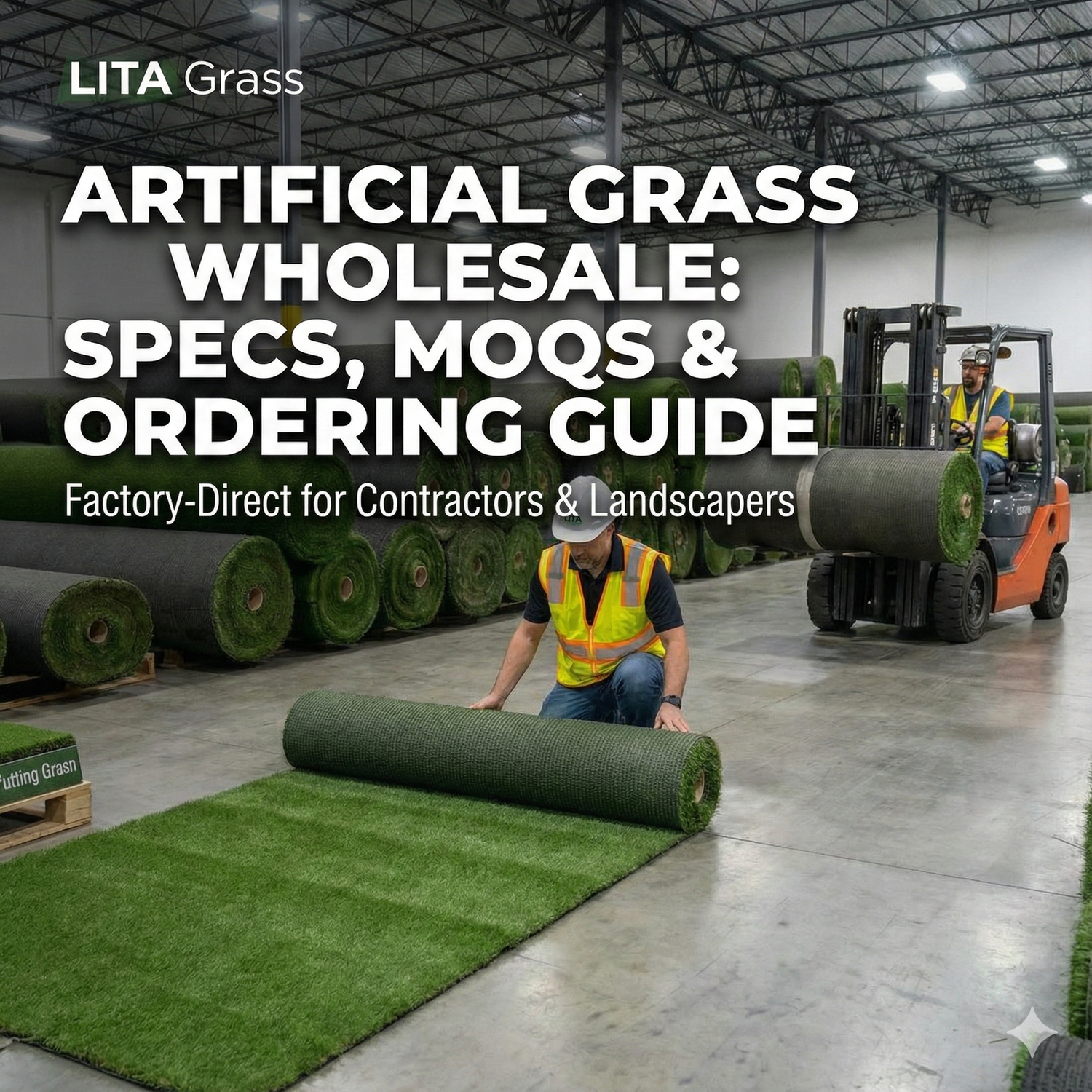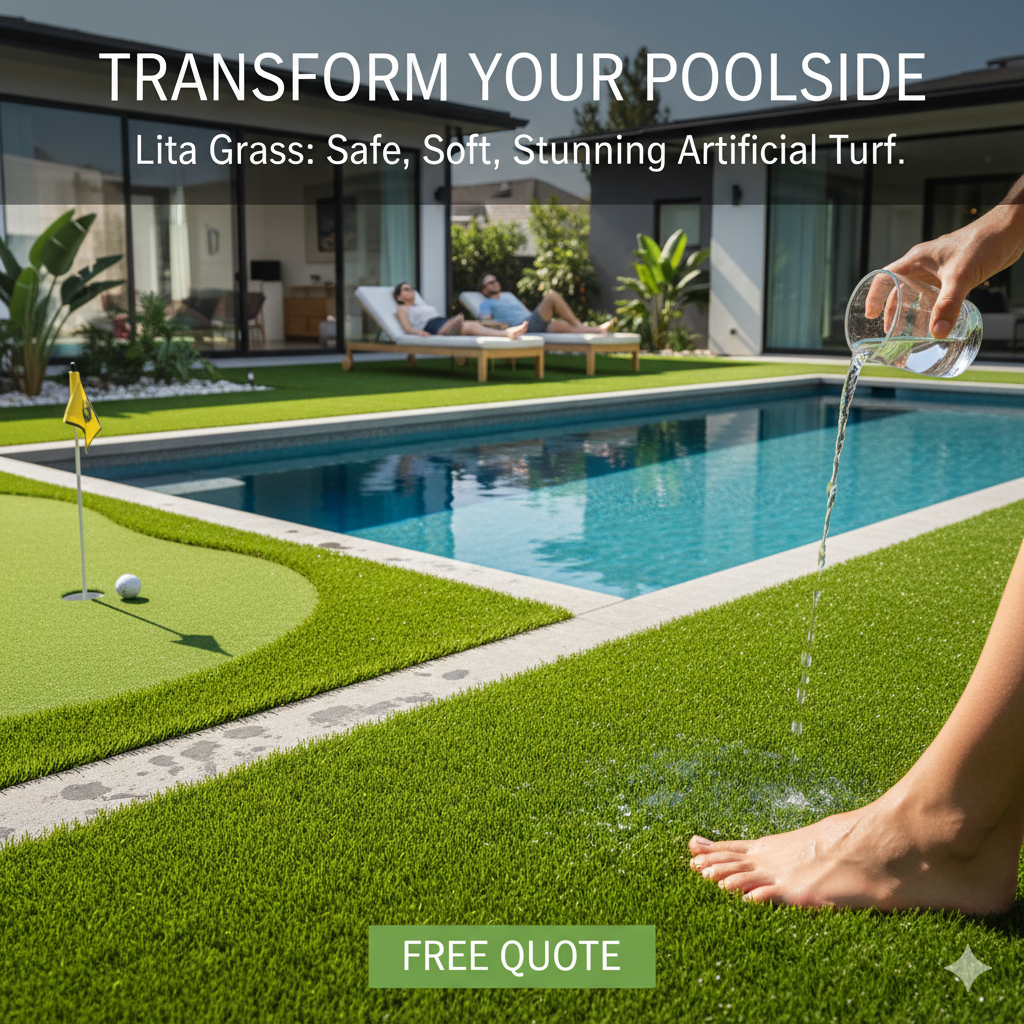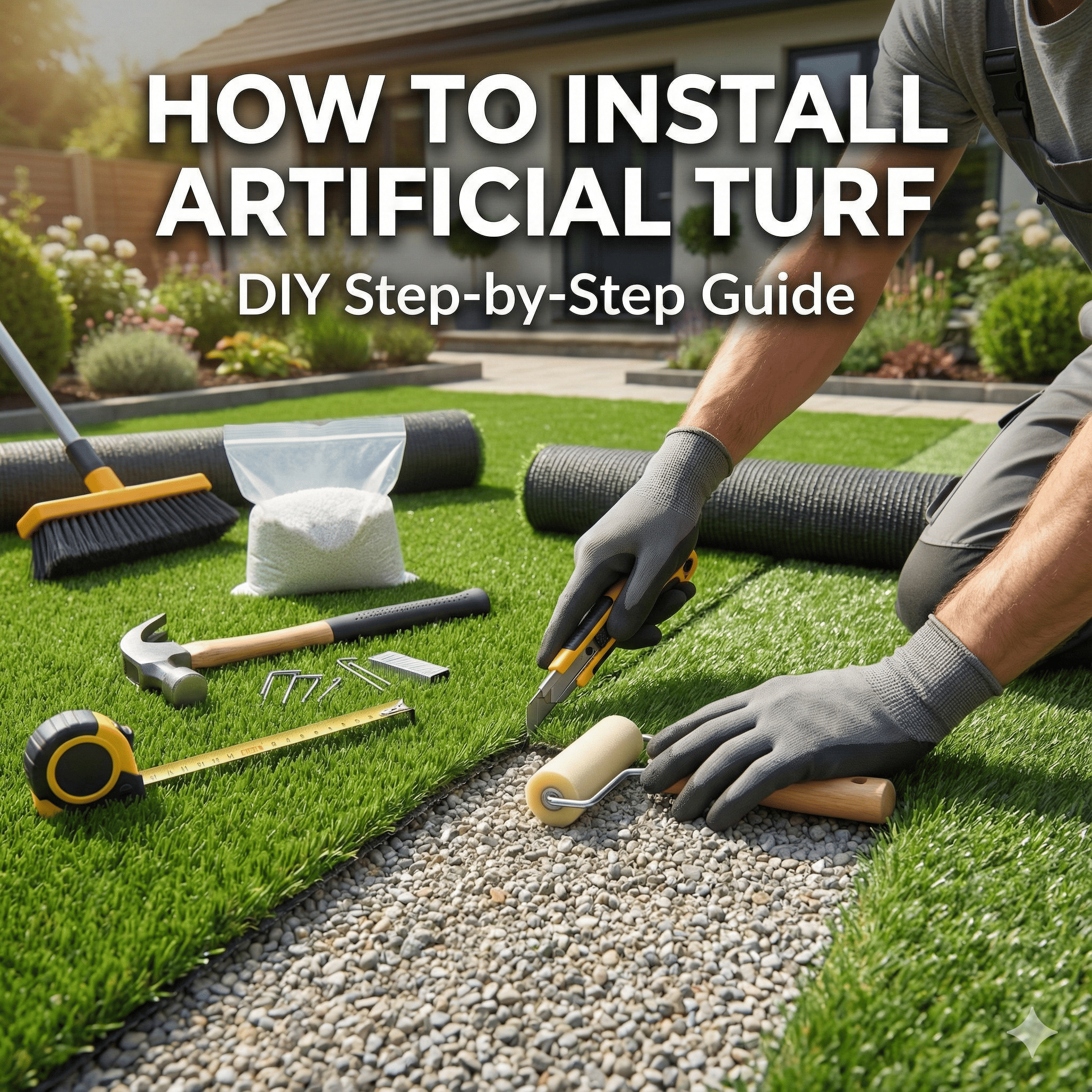Buying artificial grass wholesale is the most innovative way for landscapers, contractors, and homeowners. More people look for low-maintenance lawns and pet areas.
Understanding specifications and minimum order quantities (MOQs) will help you make better decisions.
Companies like LITA Grass and other large suppliers make it easy to order in bulk, but knowing what to ask for before you buy is even more important.
Why Wholesale Matters
When you buy artificial grass wholesale, you are purchasing rolls of turf directly from a manufacturer or large distributor instead of paying retail prices. This gives you access to factory-direct pricing, larger roll sizes, and more consistent quality control.
For contractors and landscape suppliers, wholesale buying means lower costs and higher profit margins. For homeowners or property managers, it allows you to get commercial-grade synthetic turf at a much better price.
Wholesale turf is popular for residential lawns, pet turf, playgrounds, and even indoor or outdoor decor areas. You can also find special lines made for putting greens and golf practice zones. Because synthetic turf comes in rolls, ordering in bulk ensures you get the same dye lot and texture across your whole project.
Key Specifications to Request
Before you place any order, always review the main specifications. These details affect performance, appearance, and price.
Pile Height, Yarn & Face Weight
Pile height tells you how tall the grass fibers are. Landscape and residential turf products often range between 20 and 50 millimeters (about 0.8 to 2 inches). Shorter pile heights are easier to clean and good for pet systems or heavy foot traffic. Taller pile gives a lush, natural-looking lawn that feels soft underfoot.
Yarn material matters too. Most synthetic grass uses polyethylene (PE) for softness and UV resistance, and polypropylene (PP) for strength and curled thatch. Some turf lines use “S-shaped” or “C-shaped” blades that resist matting.
The face weight shows how much yarn is stitched into each square yard or meter. Higher face weight means denser, more realistic turf. When comparing products, check both face weight and tuft binding process, which keeps fibers locked into the backing.

Roll Width, Length & Format
Wholesale turf rolls come in standard sizes. In the U.S., the most common roll width is 15 feet, though 9-foot and 4-foot cuts are also common. In other regions, 2-meter or 4-meter rolls are typical. Many suppliers allow cut-to-length orders, so you only buy what you need.
Keep in mind that rolls cannot be cut width-wise. Plan your layout carefully to reduce seams and waste. Most installers add about 5 to 10 percent extra for trimming and fitting.
Backing, Drainage & Installation Features
A strong backing system is what makes synthetic turf last for years. Most products have a primary layer made of PP cloth and a secondary coating made from polyurethane or latex. Some use SBR rubber for flexibility. Look for perforations that allow water to drain easily, especially if you are creating pet turf or play areas.
A weed barrier underlayment can prevent growth underneath the turf. For durability, check that the turf has UV resistant technology to prevent fading in sunlight.
Safety, Certifications & Performance
If you plan to install artificial putting greens or small golf & putting zones, look for sport-rated turf designed for ball roll and short-pile consistency. Some products are labeled sport rated turf or “performance turf” for training zones and fitness systems.
Large sports fields require full system certifications like FIFA Quality or ASTM testing, but these are usually not needed for home or landscape projects.
MOQs & Pricing Expectations for Wholesale
MOQ means “Minimum Order Quantity.” It tells you how much product you need to buy at once to get wholesale pricing.
For domestic U.S. distributors, most artificial grass wholesale programs have very low MOQs. You can often buy by the roll or even request custom lengths. Some distributors offer same-day shipping or Nationwide Shipping to make the process faster.
If you order directly from a manufacturer or overseas factory, the typical MOQ is between 500 and 1,000 square meters per style or color. That applies to private-label projects, custom colors, or unique backings.
Pricing for wholesale materials depends on specification and volume. Standard landscape grass lines often cost between $2 and $4 per square foot for materials only. Custom sports turf, pet systems, or UV-enhanced designs may cost more.
Buying in bulk lowers the unit price, but remember to include freight and any local delivery charges. Some suppliers even allow Will Call Pick Up if you are near their warehouse.
How to Place an Order: Step-by-Step
Getting started with artificial grass wholesale is simple once you know the steps.
Step 1: Define Your Use-Case and Product Type
Decide where the turf will be installed. Residential lawns, pet systems, and putting greens all have different needs. For example, pet-friendly turf requires strong drainage and odor control, while golf areas need firm, short fibers for smooth ball roll.
Also, think about location and sunlight. Choose turf with UV-resistant fibers if it will be in direct sunlight. If you’re covering shaded or indoor areas, you may focus more on color and feel.

Step 2: Request Quotes and Samples
After you define your project, contact two or three suppliers for quotes. Ask for detailed spec sheets showing pile height, yarn material, backing type, roll width and length, and warranty period.
Many companies offer free samples so you can feel the texture and see the color before you buy. LITA Grass, for example, provides free samples for wholesale inquiries along with 3-5 day delivery in the U.S.
When comparing quotes, look beyond the price. Check how responsive the supplier’s customer service team is and whether they provide clear documentation. A fast and helpful reply is often a sign of good long-term support.
Step 3: Review Terms, Packaging & Freight Logistics
Before confirming your order, review shipping details. Rolls are heavy and long, so they travel as “rolled goods,” not pallets. Verify roll width, diameter, and weight so you can plan truck space and unloading.
Choose delivery terms that work for you, like FOB, CIF, or DDP, and confirm whether the quote includes freight. Some suppliers offer local delivery or nationwide shipping within the same week.
Step 4: Approve Samples and Quality Checks
Before full production or shipment, confirm the final sample. This is your “golden sample.” Check pile height, color tone, backing, and overall feel. For sports or golf systems, test a small section to confirm performance.
Verify warranty coverage too. Most quality turf carries an 8- to 15-year warranty depending on use. Be sure to get the warranty in writing and review what it covers, such as UV fading or tuft binding failure.
Step 5: Delivery & Installation Readiness
Once the rolls arrive, store them flat and cool until installation day. Prepare the base with proper compaction and a weed barrier. Install the turf according to the guide or hire professional installation companies if needed.
Trim seams carefully and use turf nails or adhesives as specified. For pet turf areas, leave enough slope for drainage. After installation, brush the fibers upright and add infill if required.
Common Pitfalls & How to Avoid Them
Even experienced buyers make mistakes when purchasing artificial grass wholesale. Here are some common ones to avoid:
- Mismatched Roll Widths: Always verify roll width before you finalize your design. Using a 15-foot width instead of 4-meter rolls can cause extra seams and waste.
- Confusing Marketing Claims: Some ads mention “FIFA compliant carpet,” but FIFA certifies whole systems, not just the grass. For small putting greens, this is fine, but for sports fields, request official test documents.
- Ignoring UV Protection: Turf without UV resistant technology can fade and become brittle under the sun. Always confirm UV stabilization details in the spec sheet.
- Low-Price Temptation: If the price is under $1 per square foot, double-check the backing and drainage holes. Thin or poorly tufted turf won’t last.
- Freight Surprises: Long rolls may cost extra to ship. Measure your access points and confirm delivery method with your supplier in advance.
- Unclear Warranty Terms: Some suppliers promote “15-year warranty,” but coverage may only include fading, not wear. Ask for the warranty policy in writing.
Conclusion & Next Steps
Choosing the right artificial grass wholesale supplier is about more than price. It’s about understanding specifications, comparing samples, and confirming delivery details. When you know what pile height, backing, and UV protection you need, you can select turf that looks and performs great for many years.
Take your time to compare at least three suppliers, review their synthetic grass products, and read each warranty carefully. Once you know your roll width, MOQ, and freight plan, placing an order becomes simple.
A reliable company such as LITA Grass can make the process smoother because they offer clear specs, fast shipping, and responsive customer service. Still, always do your own research, ask for documentation, and test samples yourself.



Leave a comment
This site is protected by hCaptcha and the hCaptcha Privacy Policy and Terms of Service apply.